Recent Articles
Popular Makes
Body Types
2018 Kia Niro Road Test and Review
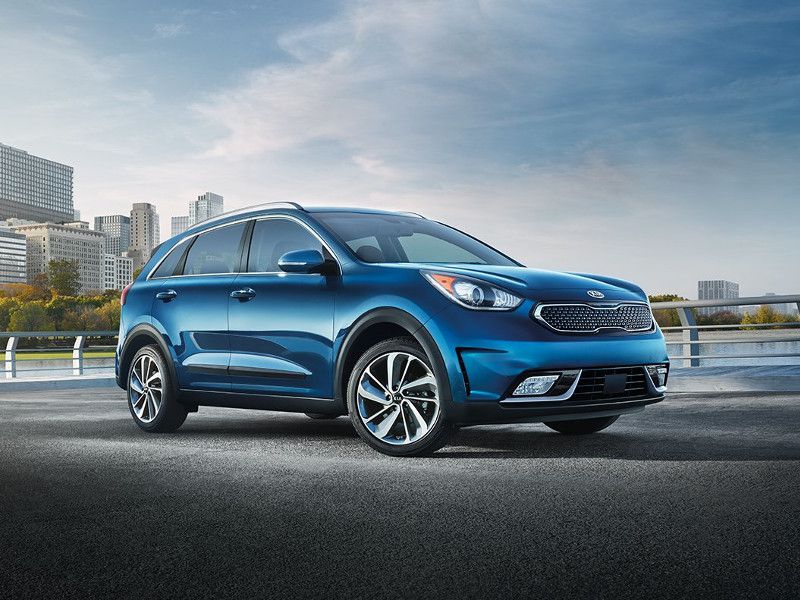
2018 Kia Niro ・ Photo by Kia
More than most car brands, Kia has always been willing to change things up, and one of the latest expressions of that is the Niro, its small hybrid SUV. One big question: Is it really an SUV? In size and height, it straddles the space between a typical hybrid like the Toyota Prius and a typical crossover SUV like the Kia Sportage. And that’s what we mean about mixing it up. With fresh styling and a new outlook, the Niro does a lot of things well, so if it can’t be pigeonholed into a particular category, it doesn’t matter to its buyers.
One of the Niro's strengths is exceptional fuel efficiency — up to 50 mpg overall. The great mileage is the product of its innovative hybrid system, which includes a six-speed dual-clutch automatic transmission. And if 50 mpg isn’t enough, it is also offered in a plug-in hybrid version. The Niro can be equipped with an impressive array of driver-assistance features, and, perhaps best of all, it doesn’t look like other hybrids. In fact, it doesn’t look quite like anything else on the road.
Doesn't Look Like a Hybrid
The Niro’s sleek exterior was designed at Kia’s design centers in Irvine, California, and Namyang, South Korea. One key design goal was to avoid the “hybrid look” that has come to characterize many vehicles with hybrid powertrains. Those vehicles are typically tall and narrow, so the Niro designers turned that on its head with wide and low proportions.
A long wheelbase and short overhangs give the Niro an athletic stance. The vehicle also features Kia’s signature “tiger nose” grille and has upscale lighting. In a bow to SUVs, the Niro has integrated roof rails, and here’s a “skid plate” at the rear. The window in the tailgate is only slightly wider than a mail slot at the post office. The lower trims come standard with 16-inch alloy wheels, while the Touring model has 18-inch alloys. Overall, you won’t mistake a Niro for a Prius or any other hybrid.
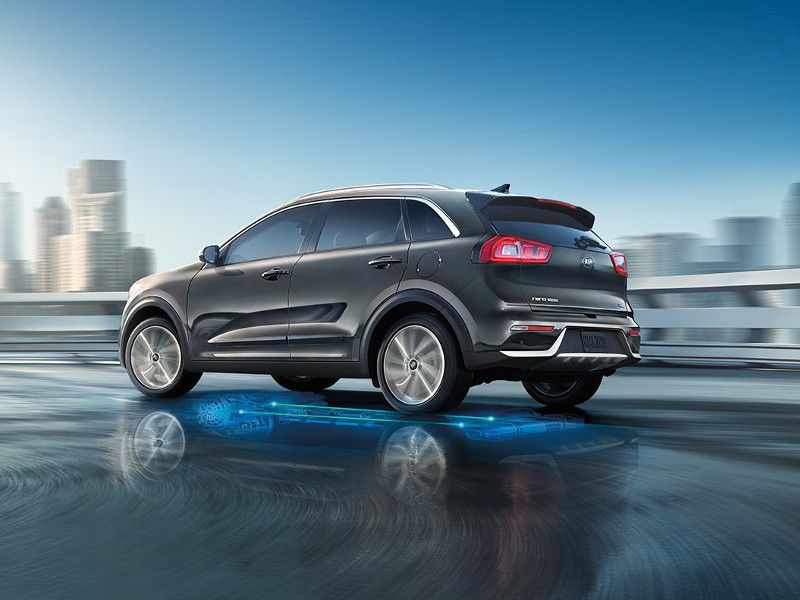
Photo by Kia
Well-Executed Interior
Kia interiors have come a long way since the brand was first introduced in America, and the Niro is another expression of that. The Niro’s interior isn’t flashy and the materials aren’t especially rich, but the design is clean, straightforward, and usable. When you get in a Niro, you immediately have a sense of where important controls are and how to use them.
The infotainment screen is placed in the middle of the dashboard. Immediately below it are well-labeled buttons and knobs that help control the system, and below them are separate controls for heating and air conditioning. The instrument cluster is clear and nicely integrates information about hybrid functions. We also like the availability of heated and ventilated front seats, though the ventilation functionality is only offered on the top trim. The standard 60/40 folding rear seat might be considered a bit tight for three adult passengers, but it contributes to the Niro’s versatility. A 110-volt electrical outlet is another handy addition to the top Touring trim level.

Photo by Kia
Intuitive Infotainment
The Kia Niro offers an infotainment system that some luxury carmakers would do well to emulate. First, its controls are intuitive and “right.” Kia has made the decision to avoid installing “bleeding-edge” systems that are difficult to understand.
The key interface in all but the upscale Touring trims is a 7-inch touchscreen, accompanied by dedicated buttons and knobs. The standard sound system has four speakers and two tweeters. In the Touring, an 8-inch touchscreen controls a Harman Kardon eight-speaker surround sound system with a subwoofer. Kia’s UVO eServices infotainment system offers standard Android Auto and Apple CarPlay smartphone integration and Bluetooth plus AM/FM/MP3/SiriusXM audio. Auxiliary and USB input jacks are standard across all Niros.
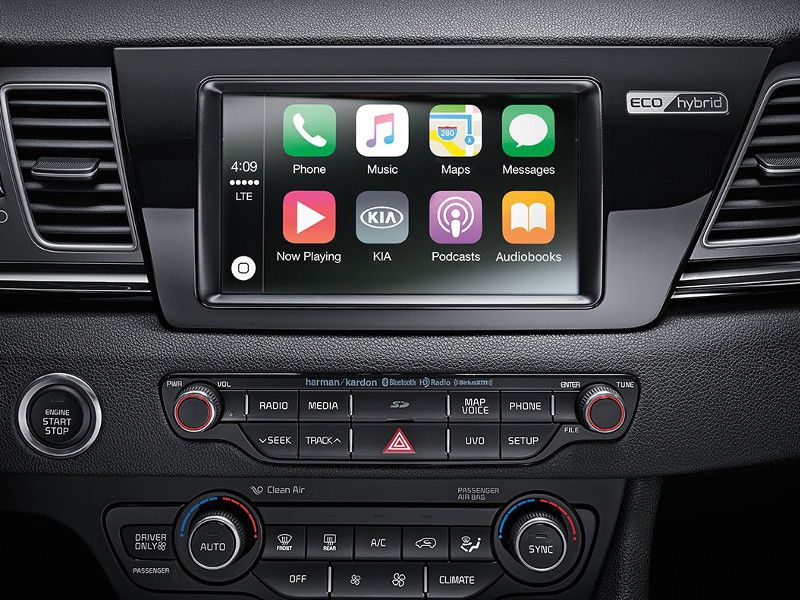
Photo by Kia
Hybrid and PHEV Powertrains
The Niro offers two hybrid powertrain choices for 2019. Most models are equipped with a conventional hybrid system that includes a 104-horsepower 1.6-liter inline four-cylinder engine teamed with a 240-volt AC synchronous permanent magnet motor. Horsepower for the combined system is 139, and the hybrid draws on a 240-volt 1.56 kWh lithium-ion polymer battery. In contrast to the many hybrids that use continuously variable transmissions, the Niro has a six-speed dual-clutch transmission.
The plug-in hybrid version of the Niro uses the same 1.6-liter four-cylinder engine, but the electric motor is upgraded to a 360-volt 60-horsepower unit. The battery pack is similarly upgraded to a 360-volt 8.9 kWh lithium-ion polymer battery. A fully charged Niro PHEV has an electric-only range of up to 26 miles from the grid before the gas engine is needed.
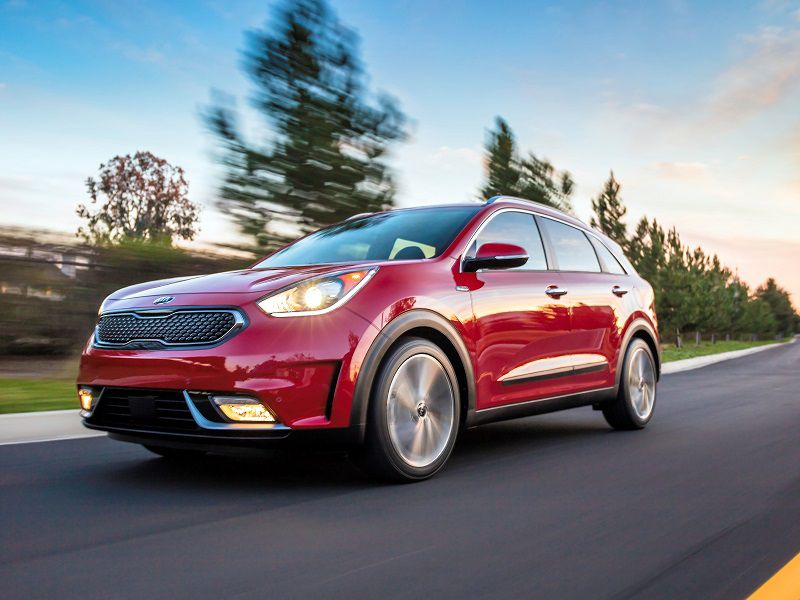
Photo by Kia
Cargo and Towing
With its low roofline and sleek styling, the Kia Niro is more like a station wagon than an SUV from a cargo-carrying point of view. Still, it will carry a lot more stuff than many hybrid vehicles. With the rear row folded it offers 54.5 cubic feet cubic feet of cargo volume, nearly as much as the 60 cubic feet of Kia's Sportage SUV. That number shrinks to 19.4 cubic feet with the second-row bench seat in use.
Of course, Niros can also accept a variety of carriers on their roof rails to help tote more stuff. The positioning of the battery pack doesn’t impede cargo-carrying, and the Niro offers a low liftover height for loading. Towing is not recommended for either the conventional hybrid or the PHEV.
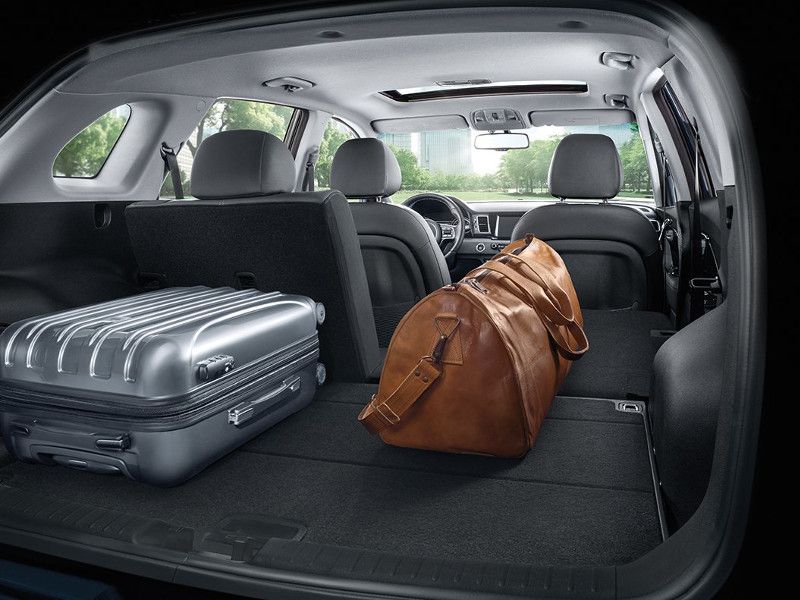
Photo by Kia
Plenty of Safety and Driver Aids
The Kia Niro is equipped with a very robust list of standard safety gear. Included are dual front airbags, dual front-seat-mounted side airbags, side-curtain airbags, a driver’s knee airbag, electronic stability control, hill-start control, and vehicle stability management. Standard electronic driving aids include a rearview camera with dynamic guidelines and Eco/Sport drive modes.
Higher trim levels are also fitted with additional electronic safety and driving aids. Included on the list are blind-spot monitoring, a rear cross-traffic alert, and lane-change assist. A forward collision warning, a lane-keeping system with a driver attention alert, adaptive cruise control, and autonomous emergency braking with pedestrian detection are available on LX and EX trims and standard on the Touring, which also includes front and rear park assist.
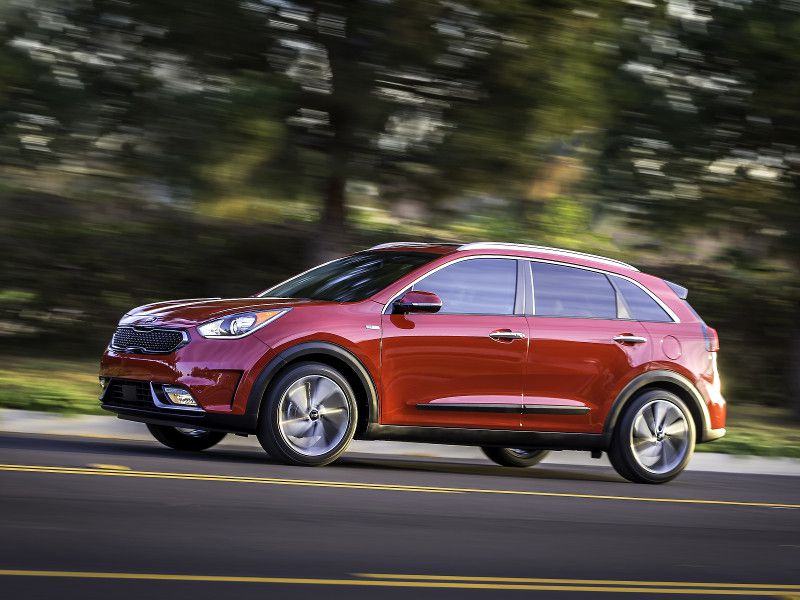
Photo by Kia
Avoiding 'Hybrid Feel'
Kia engineers went out of their way to make certain the Niro doesn’t feel like a hybrid, and they succeeded. One important step was the installation of the six-speed dual-clutch transmission that gives the Niro the verve of a conventionally powered sport wagon.
The Niro's parallel hybrid system offers nearly seamless transitions of power delivered to the front wheels, so the Niro feels like a “normal car.” The push for a conventional feel extended to braking as well. The regenerative braking in some hybrids can verge on annoying, but Kia engineers, learning their lessons from the Optima Hybrid and Soul EV, have mellowed the regenerative intrusiveness of the system while still getting significant benefits from it. We wouldn’t go as far as to say the Niro is truly sporty, but it certainly offers more driving involvement than the typical hybrid or PHEV.
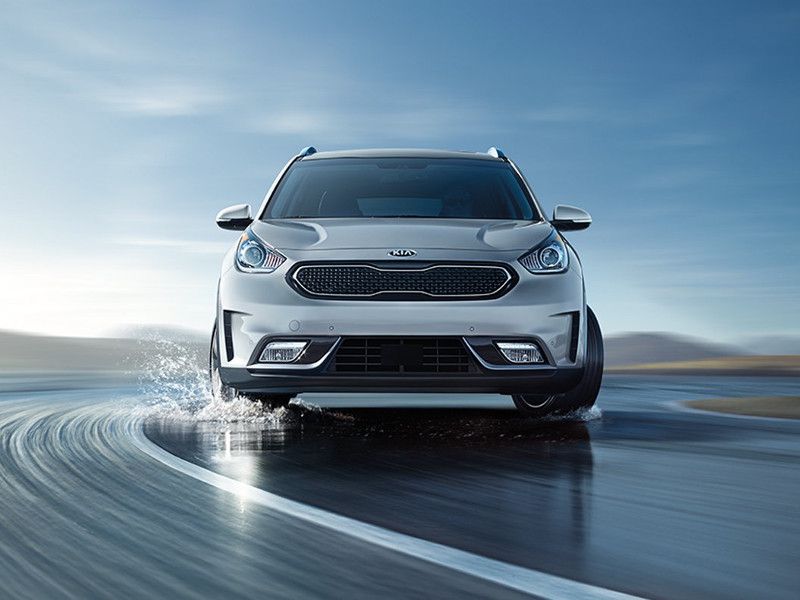
Photo by Kia
Boggling Array of Trims
The 2019 Kia Niro is available in five trim levels — FE, LX, EX, S Touring, and Touring. The FE is designed for maximum fuel-efficiency (you know who you are). The LX version has a nice array of standard features, and the EX trim ups the feature quotient a bit. The S Touring could be described as “Touring Lite.” It offers many of the same features as the top-of-the-line Touring trim but does not include — or even offer — some safety equipment that the Touring has as standard.
On the PHEV side of the ledger, the Niro is offered in three trims, and just to make things more interesting, they differ a bit from those for the non-PHEV. The base trim is the LX, and the others are EX and EX Premium. The EX Premium is the “all-in” PHEV trim. Its vast list of standard items includes a Harmon Kardon eight-speaker infotainment system with an 8-inch display, a wireless phone charger, and the whole kit of safety and driver-assist features.
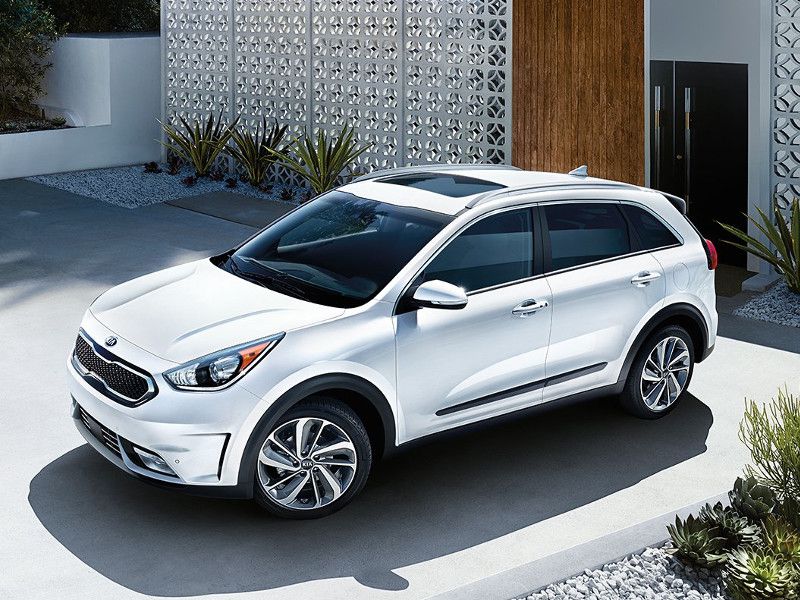
Photo by Kia
Pricing and Value
The Niro offers an impressive collection of style and technology in its segment-busting package. Among the conventional hybrids, the price-leading FE trim level has an MSRP of $23,490, while the top-of-the-line Touring has an MSRP of $32,150. The LX starts at $23,800, and the EX has an MSRP of $26,300. Eschewing the full list of safety equipment enables the S Touring to have a list price of $28,700.
Looking at the plug-in hybrid trims, the Niro LX has a base price of $28,200. The mid-level EX has a base price of $31,800. And the EX Premium starts at $34,900. Clearly, 26 miles of purely electric driving range has its cost. Depending upon your circumstances it might be valuable… or not. One thing we do know, the Kia Niro is a fresh take on the hybrid vehicle.
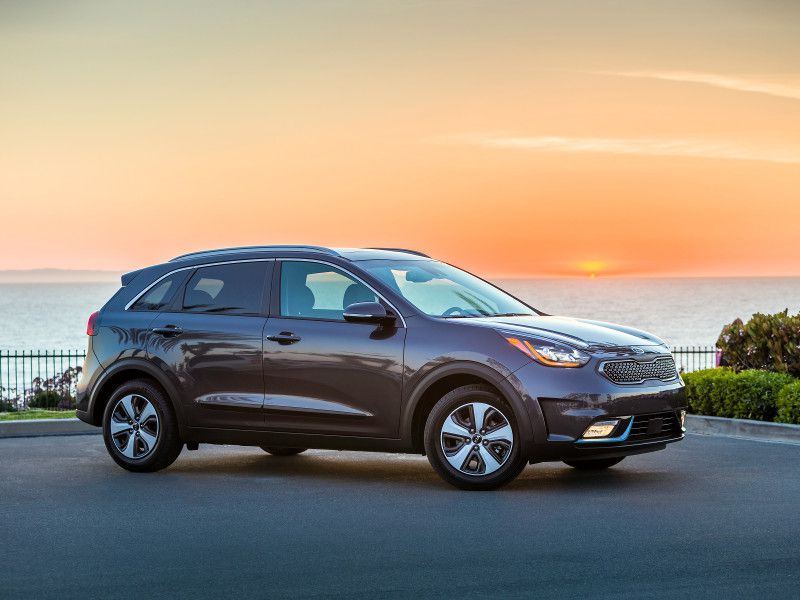
Photo by Kia